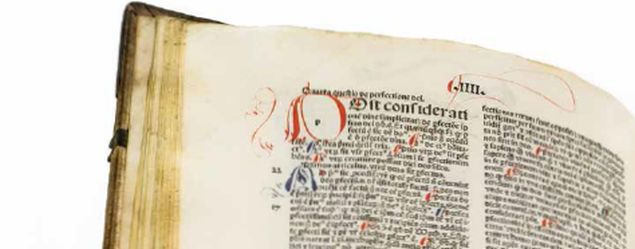
Commentaries on the Exhibit’s Works
Files
Download Commentary (185 KB)
Description
A brief commentary prepared by Fred W. Jenkins, PhD, Professor and Associate Dean for Collections and Operations, University Libraries, on the following work:
Polyglot Bible: Psalter
1516; First edition in Hebrew, Aramaic, Greek, Latin, and Arabic
Permission Statement
This item and all others in the Imprints and Impressions collection are licensed for research, educational and private use. Proper attribution must be used when downloading or reproducing this content. If you wish to use the materials for other purposes, please contact University of Dayton Libraries to obtain permission: 937-229-4221.




Comments
Origen (ca. 184–254) created the first polyglot Bible, called the Hexapla because it was in six columns: Hebrew, a word-by-word Greek transliteration of the Hebrew, and four Greek translations that included the Septuagint as revised by Origen. Only fragments of it survive today.
As the West moved from the monoglot Middle Ages to the new learning of the Renaissance, Greek and Hebrew studies flourished. This, the Reformation, and the advent of printing led to an alliance of philology and theology as scholars parsed scriptural meaning for their doctrinal wars. One aspect of this was appearance of polyglot Bibles, many with Origen’s Hexapla as their model.
The Genoa Psalter on display—possibly the first of its type to be published—contains eight columns: Hebrew, a literal Latin translation, the Latin Vulgate, the Greek Septuagint, Arabic, an Aramaic paraphrase in Hebrew characters, a Latin translation of the Aramaic, and scholia.